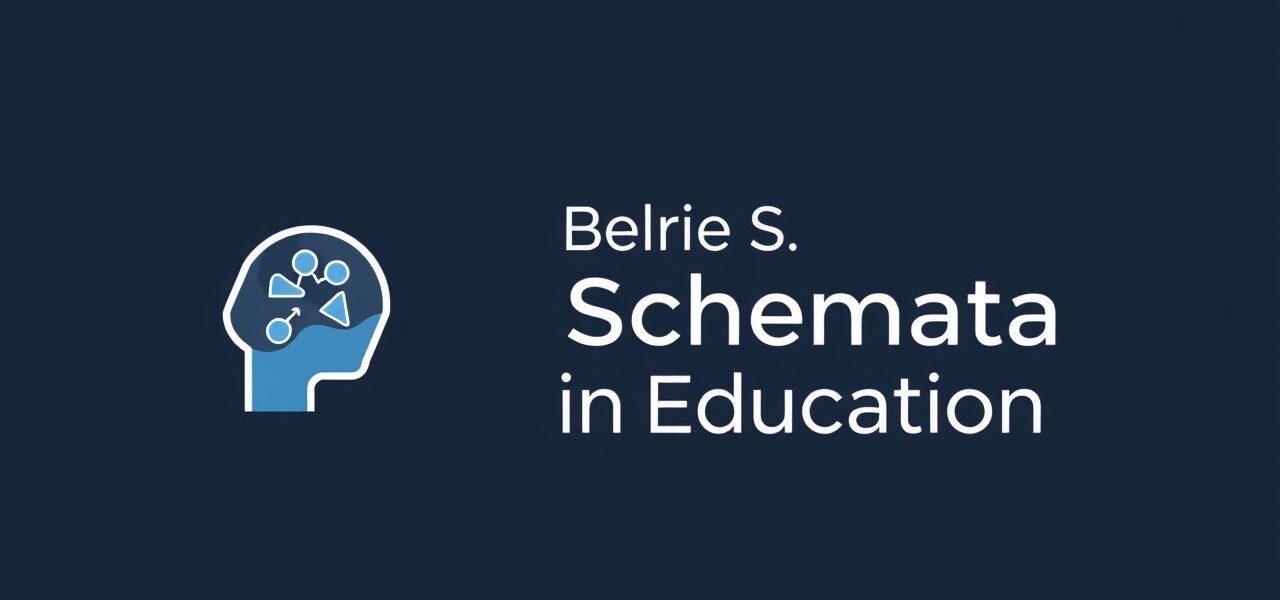In education, understanding how students learn and process information is key to effective teaching. One concept that plays a central role in this process is known as ‘schemata.’ Schemata, or schemas, refer to the mental structures that help individuals organize and interpret information. They are the cognitive frameworks we use to make sense of the world. When students encounter new material, they do not absorb it in isolation; instead, they connect it to what they already know. This topic explores the definition of schemata in education, how it works in learning, its types, applications, and how educators can use it to improve instructional practices.
Understanding Schemata in Educational Contexts
Definition of Schemata
Schemata are organized patterns of thought or behavior that allow individuals to categorize and interpret information. In education, a schema acts like a filing system in the brain. Each new concept is mentally categorized based on prior knowledge, which affects how it is understood, remembered, and used. For example, a student learning about animals might already have a schema for ‘mammals’ that includes traits like warm-blooded, furry, and giving birth to live young.
Origin of the Concept
The term ‘schema’ was first introduced by psychologist Jean Piaget, who believed that children build knowledge through the adaptation of these mental frameworks. Later, educational theorists like Frederic Bartlett and David Rumelhart expanded on the idea, linking it to reading comprehension, memory, and cognitive development. In modern educational psychology, schemata are used to explain how learners comprehend and apply knowledge in real-world scenarios.
How Schemata Influence Learning
Role in Knowledge Construction
Learning occurs when new information is added to existing schemata or when new schemata are formed. When students are exposed to content that aligns with what they already know, they can easily assimilate it. However, if the content contradicts or extends their existing knowledge, they must accommodate the new information by altering or expanding their schemata. This ongoing process supports meaningful learning rather than rote memorization.
Impacts on Comprehension
Schemata play a vital role in reading comprehension and understanding abstract ideas. When students read a text, they activate prior knowledge through relevant schemata, which helps them make inferences, fill in gaps, and better retain information. If a schema is lacking or incorrect, misunderstanding or confusion can occur. Therefore, teachers must assess and build upon students’ existing schemata to enhance understanding.
Types of Schemata in Education
Several types of schemata are relevant in educational settings:
- Content Schemata: Knowledge of subject matter and content areas, such as historical events or scientific concepts.
- Formal Schemata: Understanding of how texts and materials are structured, such as recognizing story structure in narratives or argumentation in essays.
- Linguistic Schemata: Knowledge of vocabulary, grammar, and syntax that helps students decode and understand language.
- Procedural Schemata: Understanding of how to carry out tasks, such as solving math problems or conducting experiments.
Practical Applications of Schemata in the Classroom
Activating Prior Knowledge
Teachers can facilitate better learning by activating students’ existing schemata. This can be done through activities like brainstorming, KWL charts (what students Know, what they Want to know, and what they Learned), or discussions that connect the lesson to real-life experiences. Activating prior knowledge ensures that students approach new content with a framework that aids comprehension.
Scaffolding Learning
Scaffolding is a teaching strategy that involves breaking learning into chunks and providing a tool or structure for each chunk. By gradually building on schemata, students can progress from simple to more complex ideas. For example, before teaching algebra, a teacher ensures students understand basic arithmetic operations, which act as a schema for more advanced topics.
Correcting Misconceptions
Sometimes, students hold incorrect schemata that need to be corrected. For example, a child might believe that all insects are bugs or that heavier objects fall faster than lighter ones. Educators should identify these misconceptions through diagnostic assessments and reshape the schemata through targeted instruction and hands-on experiences.
Schema Theory and Reading Comprehension
In literacy education, schema theory is frequently applied to improve reading comprehension. When students read a story or topic, they draw on their schemata to make predictions, understand characters, and anticipate plot developments. Without relevant schemata, reading becomes a mechanical process, leading to limited understanding.
Teachers can enhance reading comprehension by helping students build schemata related to the themes, settings, or cultures present in a text. Pre-reading activities, vocabulary previews, and visual aids can provide the context needed to form or activate schemata.
Using Schemata in Curriculum Design
Effective curriculum design considers the role of schemata by ensuring that each lesson builds logically on previous knowledge. Teachers and curriculum planners should:
- Sequence lessons so that concepts progress from familiar to unfamiliar.
- Include review sessions that reinforce previously learned schemata.
- Introduce new vocabulary and concepts in a context that supports schema development.
- Use interdisciplinary approaches that help students connect schemata across subjects.
Challenges in Schema-Based Learning
While schemata are essential to learning, there are challenges. Not all students come with the same background knowledge, which means their schemata can vary widely. This disparity can lead to gaps in comprehension and achievement. Additionally, overly rigid schemata may prevent students from considering alternative perspectives or adapting to new information.
Teachers must be aware of these challenges and strive to provide equitable access to background knowledge, especially for learners from diverse cultural or linguistic backgrounds. Culturally responsive teaching practices can help bridge the schema gap and support inclusive learning.
Understanding schemata in education provides educators with a powerful tool for improving teaching and learning outcomes. By recognizing the mental frameworks students use to process information, teachers can design lessons that connect new ideas to existing knowledge, correct misconceptions, and foster deep comprehension. Whether applied in literacy, science, math, or the arts, schema theory offers a foundation for instructional practices that are responsive, meaningful, and grounded in how people learn. As students continue to build and refine their schemata, they become more capable learners who can adapt and succeed in diverse educational contexts.
